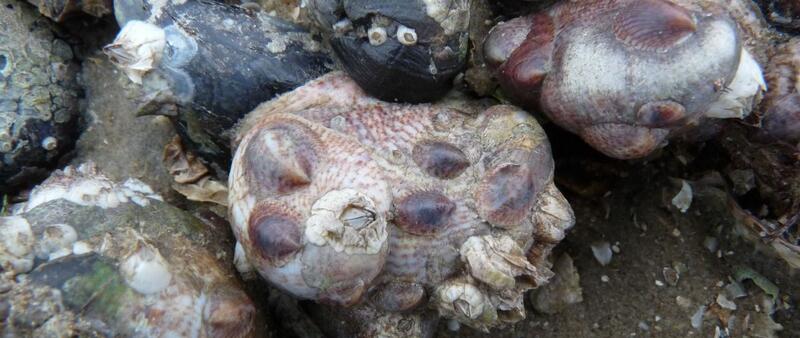Alien species

The human introduction of alien species poses a serious threat to the implementation of the guiding principle of the Trilateral Wadden Sea Cooperation (TWSC), which is “to achieve, as far as possible, a natural and sustainable ecosystem in which natural processes proceed in an undisturbed way”. Alien species have been detected in marine and terrestrial habitats of the Wadden Sea Area. To date, however, no evidence on the extinction of native species has been reported. Nevertheless, there are alien species with the potential to become invasive and to alter dominance structures, habitats and trophic regimes of the Wadden Sea. One case in point is the Pacific oyster (Magallanga gigas, formerly known as Crassostrea gigas).
Monitoring in the Wadden Sea is conducted by means of national alien species monitoring programmes in Denmark, Germany and the Netherlands. These cover primarily macro-benthic species, while fish, birds, as well as zooplankton and phytoplankton are usually not recorded. More than 50 international and regional conventions, codes of conduct and other instruments exist that directly or indirectly deal with the spread of alien species, but an overall management plan on how to deal with alien species introduced into the Wadden Sea is still lacking.
The Trilateral Cooperation supports and intensifies efforts to harmonise approaches for the prevention, management and monitoring of aquatic and terrestrial alien species. With the designation of the Wadden Sea in 2009 the UNESCO World Heritage Committee encouraged the Cooperation “to implement a strict monitoring programme to control invasive species associated with ballast waters and aquaculture in the property”, in order to safeguard the Outstanding Universal Value (OUV) of the World Heritage site.
Initial trilateral efforts date back to the 11th Trilateral Governmental Conference Sylt in 2010, where the three Wadden Sea states agreed to develop a common strategy for dealing with alien species in the region. This strategy was then drafted with the support of an ad-hoc working group on alien species (WG-AS), which was installed in 2012. As a subsequent step it was agreed at the 12th Trilateral Governmental Conference in Tønder (2014) (§ 35, Tønder Declaration) to further develop this draft strategic framework towards a trilateral management and action plan on alien species (MAPAS).The draft MAPAS prepared by WG-AS aims to give an overview of current legal measures and to propose, where feasible, trilateral appropriate actions. The importance of this topic was stressed by a brief overview of the prospective MAPAS, which was included as an Annex to the Leeuwarden Declaration (2018) signed by minsters of the three states at the 13th Trilateral Governmental Conference in Leeuwarden (May 2018).
Due to the high mobility, in particular of aquatic alien species, timely communication and information about (new) detections, spreading and measures is crucial and has to be disseminated as soon as possible. Therefore, the ad-hoc WG-AS was transformed into a permanent trilateral coordination group by the Wadden Sea Board in 2018, to finalise the MAPAS and to coordinate efforts towards a harmonized trilateral and ongoing specific monitoring program for alien species.
Future activities of the trilateral coordination group for alien species include the development of a harmonised monitoring programme for alien species in the Wadden Sea and a regularly updated list of alien species in the Wadden Sea, based on national data. In addition, a focal point will be installed to share examples of the effectiveness of prevention, control and eradication measures undertaken by any of the states in the Wadden Sea.
| Alien species, invasive alien species |
|---|
|
Alien species are species, subspecies or genetically distinct populations that were introduced outside their natural past or present distribution. Some alien species adapt to their new surroundings and become invasive by threatening or adversely impacting native biodiversity related ecosystems and ecosystems services, industries and human health. |

